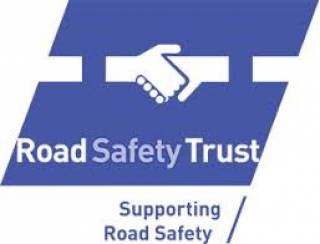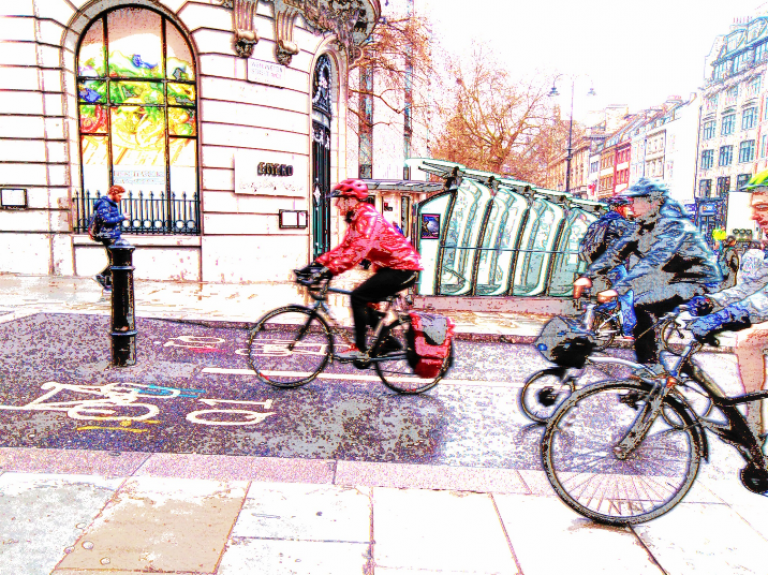The 100 Cyclists Project
UCL’s 100 Cyclists Project seeks to understand cycling crash risks. Data from 100 bike sensor units will be analysed at UCL, identifying common factors associated with near misses.

16 June 2021
Project overview
UCL’s 100 Cyclists Project seeks to understand the factors affecting crash risk in cycling through the analysis of detailed near miss data. 100 participants are being recruited, who will have a specially made sensor unit mounted to their bike to collect video and movement data while they ride. When they experience a near miss, the rider will press a button to store the data. The data will then be analysed at UCL to identify the factors that are commonly associated with near misses.
Would you like to be involved in the 100 Cyclists Project?
We are looking for people aged 18 or over who cycle in London using their own bike as part of their commute to work. We are particularly looking for people who use cycle superhighways CS4, 7, 9 or 11 for all or part of their route. If you are interested in taking part please register your interest by email: 100cyclists-study@ucl.ac.uk
Contact
For more information, or if you would like to participate, please contact:
- Prof Nicola Christie: nicola.christie@ucl.ac.uk
- Dr James Haworth: j.haworth@ucl.ac.uk
Dates
The 100 Cyclists project will run from June 2018 until January 2024.
Funding
This research is funded by the Road Safety Trust.

People
- Prof Nicola Christie
- Dr James Haworth
- Prof Stephen Hailes
- Dr Behzad Heravi
- Mr Mohamed Ibrahim PhD candidate
Aims
The 100 Cyclists project aims are to:
- identify risk factors associated with near misses and help identify circumstances that are associated with the greatest level of perceived safety;
- develop a tool kit for policy makers to monitor safety and evaluate interventions.
Why undertake this research?
Explaining near misses and their importance
All road casualties are a burden to individuals and society. However, recorded collisions involving bicycles are relatively rare. From an analyst’s perspective, it is difficult to draw statistically significant conclusions about risk factors using casualty data alone. Furthermore, official national road casualty databases are rarely a complete record of all casualties. Bicycle casualties reported by the police do not include riders who become injured on the road without being involved in a crash with a moving vehicle. Compounding this, a sizeable proportion of non-fatal injuries are not reported to the police.

On the other hand, near-misses are a relatively frequent occurrence. A near miss is an event in which an individual has to take action to avoid a crash. Past studies have estimated that near misses occur at a rate of 0.17 incidents per mile which is roughly one per day for a person with a 6 mile round-trip commute. By collecting and analysing data related to near misses, we can gain a better understanding of the risk factors associated with cycling. In turn, this will help us to develop safer infrastructure, deliver better education and inform policy around safer cycling.
Methodology
The project is divided into two concurrent streams. In stream 1, primary data collection will take place and risk factors will be identified. In stream 2, computer vision methods will be developed for automatic near-miss scene analysis.
Stream 1
In the first stream, a sensor is being developed that combines video, satellite navigation, inertial measurement and range finding, allowing us to analyse various aspects of near misses including speed of the rider, distance of close passing vehicles and other vehicles or infrastructure involved (from the video). The sensor will be linked to a smartphone app, which will allow the user to upload their data to our servers and fill in a questionnaire about near-misses they experience. As well as the button press, control incidents will be recorded at random intervals. The controls will be compared with the cases (verified near misses) to identify the significant risk factors.
Stream 2
In the second stream of the project, computer vision techniques are being developed to automatically extract important features from near miss video scenes. Starting with object detection (vehicles, pedestrians, bicycles) and environmental conditions (weather, lighting) and moving to detection of risky actions (close passes, left hooks, car dooring), this stream will develop an integrated system for automated near-miss analysis and detection.
 Close
Close

